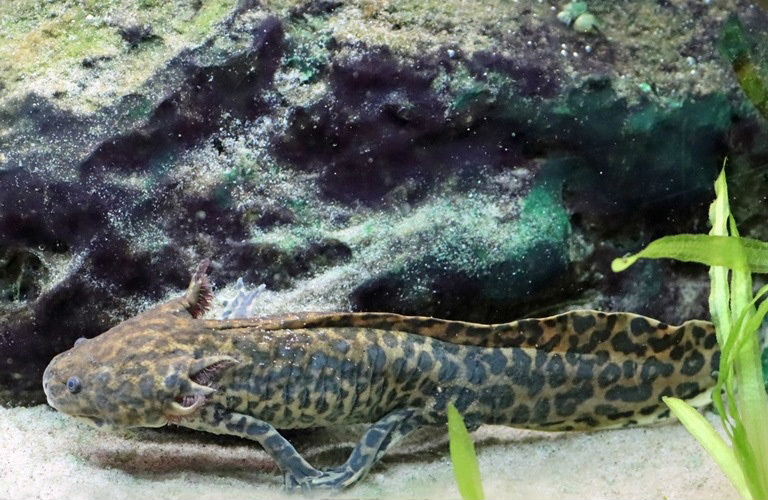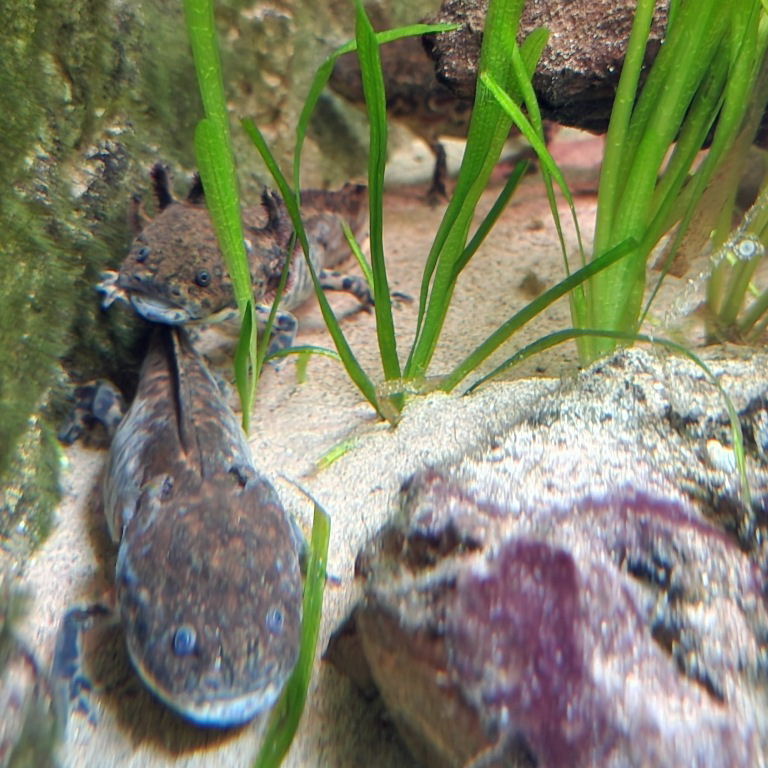Anderson's Salamander Ambystoma andersoni



Anderson's Salamander, also called Anderson's Axolotl, like several Ambystoma salamanders, is neotenic
- it stays in larval form, fully aquatic and with protruding gills, into adulthood and reproduces in larval form like the related Axolotl.



Discovered by science only in the 1980s, it is native to Lake Zacapu, a relatively small mountain lake in
Michoacan state, central Mexico. It is critically endangered in its limited habitat by invasive predators and human pollution,
including industrial and residential effluent.

